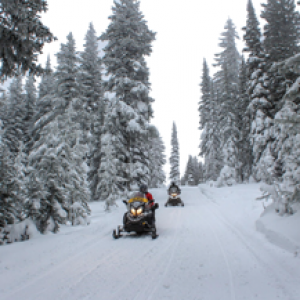Blinding Light Fabrication LLC, 3127 Central Ave Ste 3, (406) 208-5261, Berkshire, Zachary C, Service, Billings, 59102
1889 Brewing Company, 204 N 13th St, (406) 672-6995, Miller, Matt/Lindsey, Beer License, Billings, 59101
American Classic Pizzeria, 1600 Avenue D, (406) 248-4700, Dupea, Rex, Restaurants, Billings, 59102
Vierthaler Studios, 2045 Alderson Ave Unit 3, (406) 413-8373, Vierthaler, Eric, Service, Billings, 59102
Spencer Construction, 32 Bus Lane, (406) 696-7409, Spencer, David, General Contractors, Laurel, 59044
Nuernberger Bookkeeping, 8970 Longmeadow Dr, (406) 850-1929, Nuernberger, Colleen, Service, Billings, 59106
Eco ATM LLC-Albertsons # 0038, 1212 Grand Ave, (858) 779-2512, Flaherty(Manager), Sean, Service, 10121 Barnes Canyon Rd, San Diego, Ca, 92121
Eco ATM LLC- Albertsons #3367, 5317 Grand Ave, (858) 779-2512, Flaherty(Manager), Sean, Service, 10121 Barnes Canyon Road, San Diego, Ca, 92121
Sunset Vapes (Red Door Lounge), 3875 Grand Ave, (406) 671-1423, Welter, Nicole, Retail Sales, Billings, 59102
Alpine Forge Construction, LLC, 1225 Yale Ave, (406) 698-4288, Mitchell, Pete, General Contractors, Billings, 59102
Tacoland Marquez, 3414 Gallatin Pl, (406) 690-9891, Marquez Estrada, Roberto Javier, Restaurants, Billings, 59102
Montana Premier Marketing Inc, 404 N 31st St Ste 121, (619) 845-4845, Traylor, Jaylen, Service, Billings, 59101
D And S Roofing LLC, 800 Homewood Park Drive, (406) 591-7664, Molina, Martin, Roofing Contractors, Billings, 59106
Yellowstone Fur & Bone, 300 S 24th St W #F02, (406) 930-2862, Martinz, Mike, Retail Sales, Po Box 923, Big Timber, 59011
Manna Collective, LLC, 3025 Grizzly Trail, (406) 812-2364, Francetich, Bradley, General Contractors, Laurel Mt, 59044
Platinum Pros LLC, 1920 Belvedere Dr, (406) 698-2776, Myrstol, Josh, Service, Billings, 59102
Paris Montana Mercantile, 120 N Broadway, (406) 445-3277, Martincic, Heidi, Retail Sales, Billings, 59101, 19 S. Broadway, Box 1773, Red Lodge, 59068
Union Home Mortgage Corp, 100 N 27th St Ste 600b, (440) 287-7284, Minarchick (Accounting), Dottie, Bank/Loan Agencies, 8241 Dow Circle, Strongsville, Oh, 44136
Butterfly Affect Hypno-Reiki, 2044 Broadwater Ave Ste F1, (406) 598-3543, Hafer, Sara Dyan, Service, Billings, 59102
Ursa Coffee Traders, 2675 Overland Ave A, (406) 671-1398, Wilkins, Jacob, Restaurants, Billings, 59102
Betacom Incorporated, 6188 W Seltice Way Unit 114, (251) 597-2017, Baker (License Specialisty), Ashley, Utilities, Post Falls, ID, 83854
Good Grace Property LLC, 1206 Cordova St, (406) 670-9790, Loveridge, Megan & Charles, Real Estate Rental, Billings, 59102
Z Beverage LLC DBA – 105 Brewing, 815 Yellowstone River Rd, (406) 384-6999, Zeilstra, Travis, Beer License, Billings, 59105
Graves Construction Group Services Inc, 27162 Burbank, (949) 467-1799, Graves, Anthony, General Contractors, Foothill Ranch, CA, 92610
Harris Company, 532 West Hwy 39, (208) 684-7052, McDaniel, Rjay, Service, Blackfoot, Id, 83221
Dynomite Dusty, 2607 Golden Blvd, (406) 233-9390, Sandy, Dustin, Service, Billings, 59102
Web Savvy Designs, 516 Avenues E, (505) 903-0722, Roberts, Danielle, Service, Billings, 59102
MT Roll Offs, 4230 Shepherd Acton Rd, (406) 697-7739, Reynolds, Buckley, Service, Shepherd, 59079
Carpenter’s Handyman and Cleaning Services, 4740 1/2 Underpass Ave, (406) 697-0393, Carpenter/Jackson, Ryan/Jillian, Service, Billings, 59101
Grateful Gems LLC, 1803 Holloway Ave, (307) 272-3080, Rittscher, Rachel, Retail Sales, Sheridan, WY, 82801
L & E Roofing LLC, 5229 King Avenue West E1, (406) 404-0933, Enriquez, Analuisa, Roofing Contractors, Billings, 59106
Mother Tree, LLC, 4904 Nez Perces Lookout, (906) 364-5357, Lindquist, Krista, Retail Sales, Billings, 59106
Caliber Collision Center (Main Street), 1815 Main St, Caliber Holdings Montana LLC, Auto Business, Billings, 2941 Lake Vista Drive, Lewisville, TX, 75067
Blessed Cleaning Service, 307 Westchester Sq S, (406) 861-1366, Cruz, Catrina, Service, Billings, 59105
Nile Freight Solutions LLC, 235 Moore Ln Ste 120, (406) 409-6473, Lin (Manager), Lauren, Service, Billings, 59101
Cantrell Drywall, 940 Gold Dust Cir, (406) 855-2841, Cantrell, Spencer, Service, Billings, 59105
KJS Carberelli, 230 Aristocrat Dr, (406) 208-5303, Scarber, Michelle, Service, Billings, 59105
Agency 220 LLC, 2220 Grant Rd, (406) 794-9998, Gale, Benjamin, Service, Billings, 59102
Bear T Leather Trade, 3040 Central Ave Apt D306, (757) 650-5889, Themig, Joseph P, Retail Sales, Billings, 59102
Archuleta’s STR, 103 Custer Ave, (406) 438-5873, Archuleta, Efrian, Real Estate Rental, Billings, 59101
Shamrock Foods Company, 5755 Titan Ave, (480) 213-5428, O’HSaver, Natalie, Distributors, Billings, 59101, 3900 E Camelback Rd Ste 300, Phoenix AZ, 85018
Maribel R Villafranca LLC, 5665 Crestridge Rd, (406) 647-5689, Villafranca, Maribel, Service, Billings, 59101
The Dancing Doodle, 317 N 13th Street, (406) 647-7002, Plainfeather, Emmarae, Service, Billings, 59101, 3810 Bestrom Cir, Billings, 59101
Marathon Concepts Inc, 404 N 31st St Ste 121, (562) 631-4891, Middleton, Darius, Service, Billings, 59101
Legacy Visions Co, 404 N 31st St Ste 121, (323) 239-0465, Anguiano-Vidal, Mayra, Service, Billings, 59101
Macs Towing & Recovery #1 LLC, 1125 Main St, (406) 794-3242, McDonald, Jason & Corrine, Service, Billings, 59105
Macs Towing & Recovery #2 LLC, 1125 Main St, (406) 794-3242, McDonald, Jason & Corrine, Service, Billings, 59105 ,
Rapid Roll Off’s, 2421 Miles Ave, (406) 671-7145, Shaver, Noah, Office Only, Billings, 59102
Leaf Academy, 985 Peachtree Rd, (406) 534-0304, Benner (Director), Nancy, Schools, Billings, 59102
Barks and Recreation LLC, 4101 Jansma Ave, (406) 600-7672, Thompson, Clayton, Service, Billings, 59101
GO Property Management LLC, 1145 N 32nd St, (406) 698-2067, Tuss, Morgan, Real Estate Rental, Billings,
59101, 2837 Highway 3, Billings, 59106
Montana Home Builders, 6324 Victoria Ln, (406) 849-1409, Earnst, Lewis, General Contractors, Billings, 59106
EPC Made, 610 S 44th St W, (406) 661-5454, Schott/Ibarra, Arianna & Kimberly/Rose, Retail Sales, Billings, 59106
Heart and Sole Therapy, 1050 S 24th St W, (406) 702-2779, James, Courtney, Service, Billings, 59102
Performance Cleaning, 3007 9th Ave S #5, (406) 694-7321, Leyva, Melody, Service, Billings, 59101


